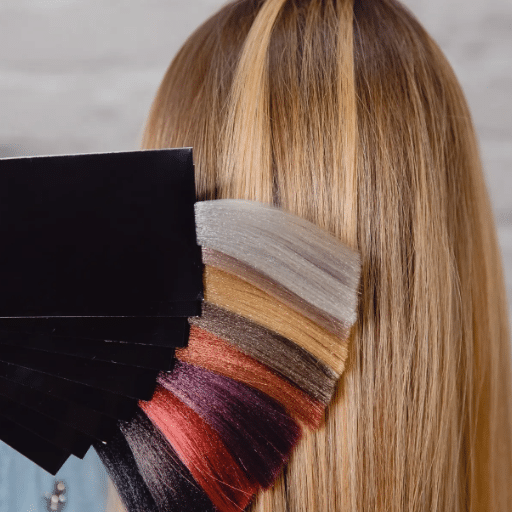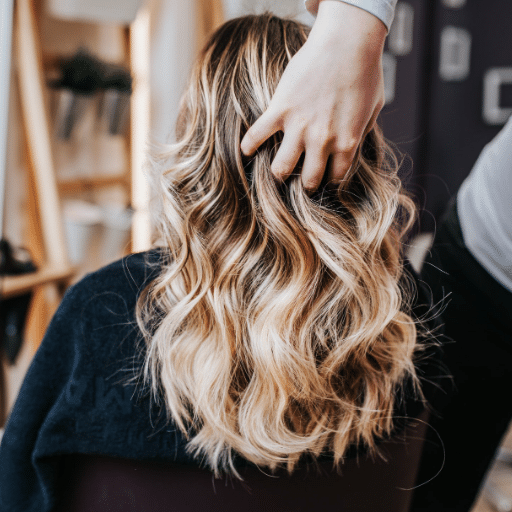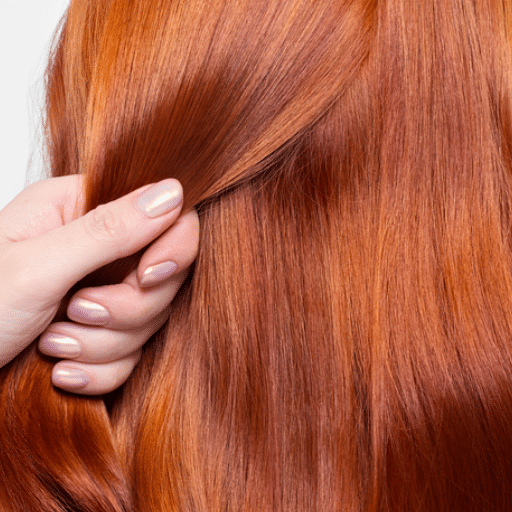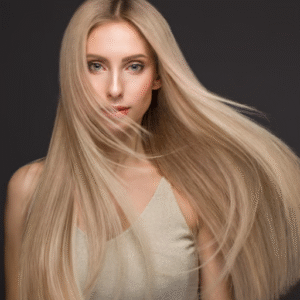Hair color transformation: The options are said to be endless. So should you choose subtle highlights, expert foil application, or do a full-on salon color? Each method affords its benefits, depending on personal style, the level of upkeep one can handle, and the final end result. Adding dimension, brightening things up for a bit, or maybe changing color altogether- whatever your intention is, knowing about the methods will certainly help in making a good decision once you book your salon. This guide shall shed light on the basic differences between highlights, foils, and all-over color so you can make an educated decision and feel proud about your new look when you step out of the salon.
Understanding Full Head Hair Color

What is Full Head Hair Color?
Full hair color is a general method of applying a single shade of color all over one’s hair. This method is good if one desires to retire gray hair; fresh color to the original one; or a completely new look. All hues are applied to the head uniformly so that the result is consistent.
One of the benefits of the full head hair color is that it can make a bigger statement. Whether you want to go with something for the faint of heart and natural or a loud and proud shade, there is a clean palette for you here. It is also great for folks who want a dye that stays forever as full head color penetrates into the hair to give rich color intensity.
Full head hair coloring needs maintenance to keep it fresh. Root regrowth happens with time, and a touch-up is generally required every 4-6 weeks, depending on the rate of hair growth. With the right maintenance and color-safe products, a full head hair color’s vibrancy can be sustained so one can enjoy that classy and unified look.
Benefits of Full Head Color
A uniform and polished look is provided by full head coloring; it further enhances the vibrancy of the hair. Unlike highlights or partial coloring, this method has a uniform color starting from the roots and ending at the hair tips, thus giving a smooth extension and sleek look to the hair. This type of coloring is best for covering gray hair or creating bold, dramatic changes.
Another advantage is the ability to express the style or personality fully. With an endless list of color choices, one can go wild with full head colors and try any shade: from something subtle to vivid and striking. This versatility allows full head colors to cater to the needs of many people and occasions.
In addition, full head coloring adds a bit of depth and dimension to your appearance. With the right care, it also ensures great texture, shine, and health of your hair. If you keep up with maintenance and use the right products that favor the color, then full head color can retain that fresh and vivid look with ease over time.
Comparison: Foils vs. All Over Color
| Aspect | Foils | All Over Color |
|---|---|---|
| Purpose | Highlighting or lowlighting; variations in contrast and dimension | Create one tone that covers the entire head equally |
| Best For | Natural and multi-tonal finishes; adding spark without full overhaul | Striking and even look; full gray coverage |
| Maintenance | Regular maintenance required for consistent highlighted patches | Less upkeep; regrowth less contrasting |
| Result | Natural dimension and depth | Clean and polished uniform look |
Choosing between foils and all-over color is also about the look you want and its maintenance. The foils are perfect for highlighting or lowlighting; variations in contrast and dimension are the essence of the technique. This process singles out some sections of a person’s hair, permitting somewhat natural and multi-tonal finishes. So, it is a good alternative if you want to bring a new spark to your hair but do not want a full-on overhaul. On the contrary, keeping foils up means regular maintenance to keep access to the highlighted patches consistent as the hair grows out.
All-over color is meant to create one tone that covers the entire head equally. It is suitable for those pursuing a more striking and even look, or for those who desire a full gray haircut. All-over color usually requires less upkeep compared to foils because the regrowth is not as contrasting given that it is several-tone coverage. While it cannot provide the natural dimension available with foils, it shines when delivering a clean and polished look.
The final decision between foils and all-over color depends highly on your personal style and lifestyle. If versatility, depth, and a natural effect become priorities, foils would be best. Alternatively, if you want something that looks dramatic, harsh, and low maintenance, then all over color is the way to go. Both have their individual merits, so think in terms of what you want and speak to a professional stylist for individualized input.
Choosing the Right Hair Color

Factors to Consider: Skin Tone and Eye Color
Choosing the right hair color, soft tones that augment your natural features, especially those relative to your skin tone and eye color, are a must. Warm tones, such as honey blonde, caramel, or warm browns, will bring out the beauty of those possessing warm skin tones with either golden or yellow undertones. Likewise, hazel or brown-eyed beauties come alive with warm tones, complementing their inherent vigor.
If you have cool skin tones that tend to come with pink or blue undertones, cool colors would work better for you. Ash blonde, platinum, and cool espresso brown go perfectly. If your eyes are blue or green, these shades would intensify and define your eye color, keeping thee in perfect balance.
Finally, it is more flexible in the case of neutral skin tones that lie in the intermediate zone between warm and cool. Neither undertone pairs well with almost all shades, either warm or cool. Choose shades like sand, beige blondes, or soft browns to complement your features. An expert stylist will come in handy when you want to make the right choice regarding shades that complement your undertone and features.
Popular Shades: Blonde, Brunette, and Dark Hair
Blonde shades come in a broad range of shades that are applied to the hair to brighten and soften the appearance. Honey and golden blondes are best for weathered undertones, bringing out the warmth in the skin. Such colors as icy or ashy blondes will complement cool undertones with great contrast and appeal to your complexion. They can be used subtly or varyingly, depending on the effects one chooses-whether a winning combo for a classic or very modern looks.
Brunette shades always work well with almost all undertones, constituting a great option for anyone who prioritizes versatility. There are brown tones warmer than some tones: chestnut, caramel, or chocolate brown-lighting warm undertones, whereas cool brunettes such as espresso or ash brown give deeper and more-richer cool skin tones. Among the colors, brunette ones are best for people wanting very natural and polished, easy-to-maintain styles.
Dark shades of hair color such as dark browns and black bring out this bold and dramatic look. They tend to suit cooler undertones with their stark and elegant contrast, but can also complement warm undertones when done with subtle highlights or a soft finishing touch. Jet black and blue black are colors that tend to highlight one’s striking features, whereas natural black or dark espresso colors lend a much more balanced, well-rounded look. These darker shades give a statement to confidence and glamour, being a forever strikingly dramatic yet ever-accessible choice to anybody.
Expert Tips for Selecting the Perfect Shade
Choosing the right shade is all about knowing your undertone and what personality you want to express. To begin with, determine whether your undertone is warm, cool, or neutral. Warm undertones go with shades like caramel, chocolate browns, or warm auburn, while cool undertones make ash browns, platinum, and blue blacks pop! Neutral undertones give you the free rein of complementing a wide array of colors.
Consider natural features such as eye or eyebrow colors when selecting a shade: coordinating them will yield a more harmonious look. For instance, lighter eyes tend to work great with softer contrasts, while darker eyes tend to balance out richer or bolder ones. Paying attention to these details can really work in your favor in terms of overall enhancement, yet keeping your look in sync.
Lastly, consider maintenance and lifestyle. The lighter colors tend to be a tad bit more high maintenance in that they require frequent touch-ups to keep them vibrant. On the other hand, darker shades or very slight natural colors fade away more smoothly and less maintenance is required. This is on balancing what looks you want with the time you are willing to put in so the color keeps on being a joy for you. If you are in doubt, always get your professional in-the-know on it, for they have the best insight applied to your distinctive features.
The Application Process

Consultation: What to Expect
The first step to attaining your look shall be the entire consultation. During the appointment, the condition, texture, color, and health of your hair may be evaluated. In addition, your objectives and tastes will be discussed thoroughly, so that the professional understands what style or color you want to be actually done. You will also have an opportunity to work through your concerns, inspirations, and options for the procedure.
Then, the stylist will set and evaluate the best options. They may suggest a particular technique or modification that shall give you good results- something that works with your features while being easy to maintain with upkeep. Here is where you will want to say how you envision the upkeep because they can further adjust their recommendations to fit into your time-wise and looks-wise preferences.
Finally, an overview will be provided for you regarding the application process with an estimated timeline and cost, thereby presenting full transparency. Should your desired result require more than one session, your stylist will explain the stepwise approach to get the best outcome. By the conclusion of the consultation, you should feel informed and confident about what lies ahead, and all your questions will surely be addressed.
The Step-by-Step Application Process
The application process is structured for accuracy and to meet your expectations. It starts with the preparation stage, wherein the hair is analyzed for its natural texture, condition, and tone. This analysis helps create a plan tailored to work best for your individual needs. This is the time for your stylist to prepare the necessary tools and products as per the consultation.
Secondly is the actual application, carried out slowly, ensuring evenness in coverage and achieving the desired end results. The stylist will proceed to apply the selected product in sections, following the prescribed plan. The application process will be carried out under their keen observation to ensure everything is going smoothly and that adjustments are being made on the go in order to guarantee the best results.
Finishing consists of rinsing, styling, and appraisal of the final look. Your stylist will work on your hair by shampooing and conditioning to retain its healthy elasticity and shine. Then comes the styling process, where the hair will either be accentuated for its renewed vibrancy or undergo transformation. Finally, your stylist will advise you on the aftercare methods so that you can maintain and prolong the results effectively.
Understanding Single-Process Color
Single-process color is probably the simplest hair coloring technique because a single color is applied in one step to the entire mass of hair. It is done to create a monotonous tone or cover gray, or sometimes to subtly intensify the natural color of the hair. Ultimately, it is a straightforward process providing even, consistent results.
Since it offers a slight change that is grass-roots in nature through and through- without any highlights, lowlights, or other multi-dimensional effects- the technique is perfect for the individual intent on staying pretty close to a classic or natural look-giving them the option to have a light and bright dotting of freshness on their hair. The chosen shade can be tailored fully, so it complements the individual’s skin tone and style.
With less to do than those glamorous balayage spells and multi-step highlights, single processes colors normally are fast and less expensive. They have to be kept up, though, as regrowth will show with time; the upkeep is usually quite manageable with scheduled touch-ups. The method is beautiful and simple, a staple of hair colors offering even tones.
Maintenance and Longevity of Hair Color

Products to Prolong Color Vibrancy
Nurturing vibrant color requires products that protect and nourish colored hair. Start with a color-safe shampoo and conditioner made particularly for dyed hair. They are formulated for gentle cleansing so they do not strip the color from the hair, which would otherwise remain richer and radiant for a good amount of time. Avoid any that contain sulfates, for sulfates tend to fade away the color prematurely.
Deep conditioning or hair-mask treatment also becomes indispensable on a weekly basis to replenish moisture and strengthen the hair. Color-treated hair remains more prone to being dry and damaged, and these treatments help in maintaining a healthy state, all while keeping the color bright. Go for conditioning products containing hydrating ingredients such as argan oil, shea butter, or keratin to provide deep nourishment.
Also, consider a heat protectant spray or leave-in product for when you style with heat often. Heat weakens the hair; dyed hair especially loosens away. A heat protector coats it with an invisible barrier that can help reduce the damaging effects of heat, thus keeping hair even in its vivid color longer. In general, applying these purposeful products on a daily basis can greatly help in elongating the time your hair color spends shining.
Strategies to Prevent Damage
To prevent hair damage, it is crucial to maintain a gentler and consistent hair care routine. Use a gentle sulfate-free shampoo and follow with a moisturizing conditioner that seals in moisture. Do not wash hair daily because that would strip away the natural oils, leaving hair dry and brittle. Instead, try to wash your hair 2-3 times a week or whenever it needs it, depending entirely on your hair type.
Avoid heat styling as much as possible to prevent more damage. Instead, let hair air-dry or use styling techniques that don’t involve heat. If it is absolutely necessary to use heat, then apply a heat protectant before exposing your hair to any temperature. Set the temperature for your heat tool at the lowest level that works and try to use it sparingly.
Bear in mind to keep a proactive posture: setting an appointment for cuts every 6 to 8 weeks removes split ends from ever propagating into breakage. Meanwhile in your hair-care regimen, treat the strands with some moisture rejuvenation-whether a deep conditioning or simple hair mask-every week so that the hair can stay moisturized and strengthened at the cuticle for longer-term health.
Maintaining Color Between Visits
To keep your color from fading away between appointments, you must fight fading and maintain beauty. Washing less often is a simple first step, as frequent washing leads to a color being washed away in mere days. Second, wash with lukewarm water instead of hot water: heat speeds color vibrancy loss. Additionally, select shampoo and conditioner from those given choices specially tailored for color-treated hair, protecting color and nourishing it on drying.
Keep in mind, environmental factors may also serve to damage hair. Prolonged sun exposure and chlorine from the local pool can cause faster fading of color. To counteract the things, apply an anti-UV spray whenever you are outside, and rinse your hair before and after swimming to prevent absorption of chlorine. While doing so, wearing a hat will certainly help protect your color.
As with any haircare regimen to maintain color, keeping moisture in the hair is of utmost importance. Hydrated hair is capable of holding onto the dye a bit better; therefore, do deep conditioning treatments at least once weekly to balance out the moisture in the hair. Avoid using heat grooming tools; however, if you find that you must style using heat, apply a heat protectant to avoid additional damage. Performing these simple steps will definitely help stretch color life until your next time at the salon.
Latest Trends in Hair Coloring

Seasonal Inspirations and Popular Choices
Inspired by natural tones and changing fashion statements, seasonal hair color choices follow nature. For fall-winter, warm, deep colors of chestnut, caramel, and auburn are in vogue, with the coziness and earthiness associated with these seasons. Depth and warmth are notions that these tones bring to the overall look, especially when layered clothing is being worn during the cold season.
Lighter and brighter colors come out for spring and summer to keep pace with the brightness of the season. Highlights or balayage of blondes kissed by the sun, colors with a soft honey hue, and pastel shades such as lavender or peach are very in-fashion during this time. It combines well with a fresh atmosphere and imparts playfully youthful looks.
This conforming to the times is low-maintenance techniques consisting of balayage and ombré, which make a smooth and natural gradient flow and allow for an immense possibility on looks. Another choice that gave full-edged transformation is bold colors such as fiery red or icy platinum. Irrespective of the season, these choices allow one to express his own personality and style on a curve sprawled with current time.
Innovative Techniques: Balayage and More
Balayage, from the French word “balayer,” meaning “to sweep,” is a method of coloring hair that yields a natural sun-kissed gradient. Unlike classic highlights, the dye is hand-painted on the hair in a sweeping motion, giving a cloudy, softer finish. Hence, it goes for a laid-back vibe that fits those wanting to go with a more natural vibe, whose maintenance fades away into an art form.
Another stylistic technique now in vogue signals a fade of pigment, from rootless dark to honey light. Giving the look a bold yet smooth feel, the ombré offers much dimension and style for those willing to embrace it on hair. And it’s certainly showy on longer hair, as the contrast between shades comes alive with every step.
Both balayage and ombré have indeed revolutionized the hair coloring trade by means of offering an array of personalization and versatility. These techniques cover styles ranging from subtle and sophisticated to outright bold and loud. These techniques provide opportunities for stylists to experiment with color gradients to express their creativity while simultaneously allowing their clients to be a vector of self-expression and popular culture.
Dark Hair with Highlights: A Growing Trend
In recent times, dark hair with highlights has truly become a prominent trend, lending exquisite contrast to bring out natural beauty. Light streaks added to dark hair create a unique style, with an aura of depth, dimension, or simply that kiss of sun. Being versatile, the technique embraces every hair type, complexion, and style choice. For the more confident ones, more of a refreshing option would suffice.
One major factor in the rising popularity of dark hair highlight style pools in its low maintenance and neat look. Even though they seem like a hair color change, highlights tend to grow more subtly and lend themselves to fewer touch-ups as opposed to hair dyeing. Therein lies the allure that keeps fashionistas willing to wear this effortlessly chic style fitting their fast-paced life.
Moreover, dark hair with highlights can be so specific to the desires of an individual. From pleasant shades of caramel to dustier tones of blond, and even loud colors, the whole gamut is thereby available for customization. Choosing anything from subtle face-framing pieces to almost loud contrast, the trend imparts some visual texture to the hair while emphasizing competing face features, thereby creating an impeccable glamour and very contemporary look for anyone who dares.
Frequently Asked Questions (FAQ)
Q: What is full head color?
A: Dyeing the entire head of hair for an altogether even shade is called a full head color dyeing technique. The process is especially good for folks who want an entirely different hair color or want to cover their grays and give themselves a new vibrant look.
Q: What is the full(head) color versus highlighting colors difference?
A: Full head color treats the entire hair, whereas highlights via foil lighten certain sections to create dimension. Hence, highlights work well to accentuate a base color or create contrast; meanwhile, full head color keeps things consistent and solid.
Q: Is it possible to look natural with full head color?
A: Yes, it is possible for full head color to be done in shades complementary to one’s natural hair. Close-to-natural colors like warm brown or soft blonde will give a seamless, natural-looking feel that really compliments the features.
Q: How often are color touch-ups recommended for full head color?
A: Maintaining the full head color usually involves touch-ups depending on how fast your roots grow and the type of dye used. In general, this should be done every four to eight weeks to keep the bright look, especially if you have dark hair and are lightening it.
Q: What are the techniques for applying full head color?
A: Typically, colorists may balayage or simply color the hair all over. Some also might apply a bleach and gloss combo to achieve a glossy shine typical of some darker-to-blonde conversions.
Q: Will full head color make the hair dull or brassy-looking?
A: When a full head color is performed poorly, the hair will probably develop that brassy or dull effect. Should you wish to avoid this, use a great dye brand and even go for a gloss after-color treatment to really allow the hair to shine brightly.
Q: How would one maintain the full head color at home?
A: For full head color care, use sulfate-free shampoo and conditioner for color-treated hair. Also, deep conditioning treatments regularly help maintain hair health, keep the shine, and avoid brassy tones.
References
-
Reddit – What Do Salons Mean by Full Color/Tint?
A discussion explaining the process and meaning of full head color or tint at salons. -
YouTube – How To Do a Full Highlight in 20 Foils or Less
A video tutorial showcasing techniques for full highlights, which can complement full head color. -
Reddit – Step by Step: Bleaching and Dyeing Hair
A step-by-step guide for bleaching and dyeing hair, including full head applications.





